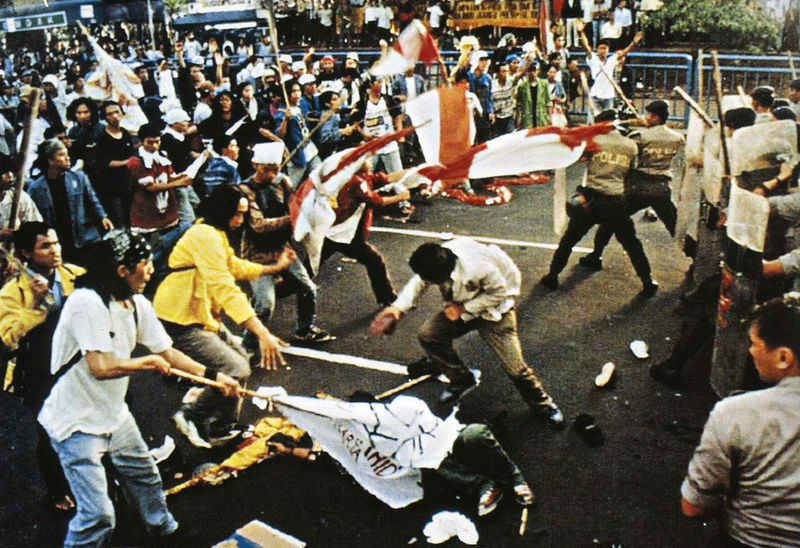20 years ago, a regime that seemed unmoveable, that had ruled for decades, while standing on the bones of millions of people massacred between 1965-66 and with its police and soldiers present at every corner, collapsed in the blink of an eye. On 21 May 1998, all over Indonesia, on TV and radio, a voice familiar to the ears of 200 million people proclaimed: “I have decided to declare that I have ceased to be the president of the Republic of Indonesia.” The people cheered and a new chapter in the modern history of Indonesia opened.
The fall of the New Order regime was truly a revolution, even though the movement was called “Reformation” (Reformasi). People that had long been in a deep slumber – or more correctly forced into that state – exploded onto a political arena that was barricaded by the army’s bayonets. The toiling masses demanded their rightful place in history. Their determination and will to sacrifice for it meant that no force on earth that could stop them.
The gates of democracy that had been kicked down by the people permitted a large wave of mobilization to develop, with hundreds or even thousands of workers, peasants, fishermen, urban poor, and youth organizations being formed. Every single group that was once oppressed found its voice and began fighting back.
There was a boisterous carnival of democracy following the fall of Suharto. 20 years since the fall of New Order, many things have changed. But at the same time many things remain the same. The butcher Suharto was overthrown, but the whole economic and political system that formed the foundation of his bloody regime is still intact, and therefore the same oppression against working people continues.
 After three decades in power, the brutal Suharto regime ultimately collapsed / Image: public domain
After three decades in power, the brutal Suharto regime ultimately collapsed / Image: public domain
The movement is faced with one question that has shadowed it since the fall of Suharto: “Where are we going after Reformasi 1998?” This question becomes ever louder today, 20 years after that revolutionary event and 10 years after the 2008 financial crisis and the organic crisis of capitalism. There is a sense of desperation amongst those in the movement, who feel that they are walking on the spot, moving from one campaign to another, from one advocacy case to another, again and again without any end in sight. Like the Sisyphus myth, it is as though they are condemned to push a boulder to the top of the mountain only to see it roll back again. All kinds of coalitions and fronts come and go, unable to become a permanent point of reference for the proletarian movement.
There was one glimmer of light in October 2012, with the first nationwide general strike in Indonesia since 1965. However this massive wave of workers’ struggle subsided in few years, and its retreat was marked by the passing of Law No. 78 in 2015 that robbed workers of their right to negotiate minimum wages. With this retreat, the regime became more confident in launching assaults against the working people in the form of business-friendly investment policies, land grabs, evictions of the urban poor evictions and so on. The movement’s retreat also gave room for reactionary elements such as the Islamic Defenders Front (FPI) to become bolder in spreading racial, religious and ethnic prejudices amongst the people.
20 years since we won some democratic freedom from the dictatorship (which, despite its limitations has given us opportunity to build workers’ organizations) it is necessary to draw the lessons from the experiences of the past, and answer the burning question: which way forward?
People ready to struggle
We have to first draw the single most important conclusion from the Reformasi 1998 movement and the experience of the past 20 years, which is the capacity of the masses for revolution. Time and again, the masses have shown their elan, creativity, and courage. We are not just referring to the mass revolutionary action in 1998, but also decades before that in 1926-27, 1945-49 and 1955-1965. Even after being crushed in 1965-66 in the most brutal manner, destroyed not just physically but also ideologically, even though they had to wait more than 30 years, the toiling masses arose again. And when the working people move, there is no fortress that can hold them back.
But again and again, this revolutionary capacity evaporated into thin air and the revolutionary movement stopped halfway, and sometimes suffered bloody defeat as it had in 1965. This was not because the masses were not ready to struggle, but because of the lack of a leadership to put forward correct and timely slogans and a programme of action that could lead the movement to its final goal. But we often hear the lefts blaming the people for the defeat: “people’s consciousness is low,” “they don’t understand revolution,” and many other excuses. Pessimism toward the revolutionary capacity of the toiling masses transforms itself into a vicious cycle, a self-fulfilling prophecy.
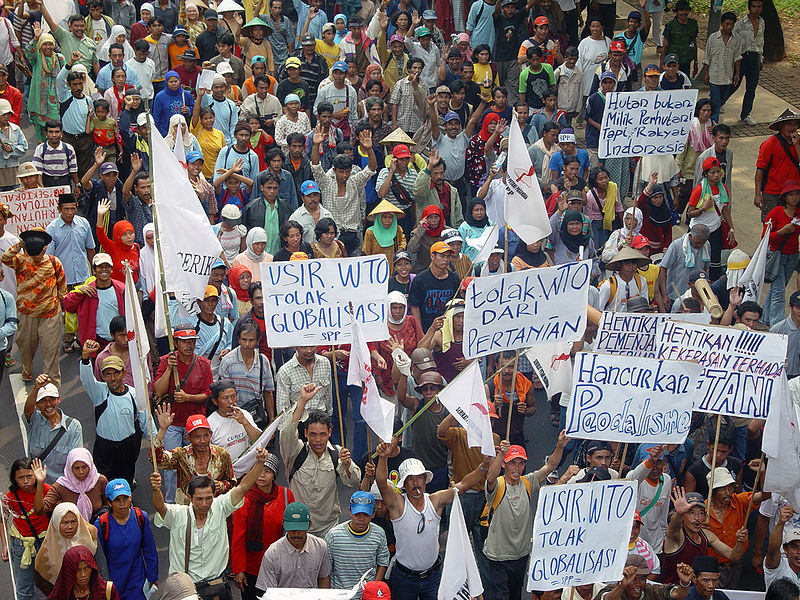 The Asian economic crisis in 1997-98 was an earth-shattering event / Image: Jonathan McIntosh
The Asian economic crisis in 1997-98 was an earth-shattering event / Image: Jonathan McIntosh
Following the ebb of a revolutionary wave, like the Reformasi 1998, or in a smaller scale the National General Strike in 2012, we often face a longer period of retreat and deep apathy. The masses cannot constantly be in the white heat of struggle. After entering the arena of struggle on a mass scale and attempting to transform their fate, their energy will be drained when their goal is not attained. People’s will to struggle is not a bottomless well that can be reached into anytime one wishes. But when the masses take a step back, they also contemplate what has just transpired, and they will be more careful when they re-enter the arena of struggle in the future.
Here the tasks of revolutionaries become very important. Instead of being pessimistic and demoralized, we must draw the necessary lessons, retreat in good order, save the best elements from demoralization, and if necessary launch a ruthless ideological battle to cut off old elements that have become a deadweight to the movement. The latter is very important, because it is far too often that old activists, demoralized because of past defeats, turn themselves into the biggest obstacle for the revival of the movement.
We do not lack such 1998-generation activists. We only need to see the fate of PRD today. PRD in the 1990s was a party that united in its ranks the most advanced, radical and militant youth. Today it has been transformed into a nationalist party, that openly collaborates with bourgeois parties like Gerindra. The fate of many ex-members of PRD is no better, with many carving out comfortable and successful careers in various NGOs, and others joining the government and bourgeois political parties.
All is not lost. There is a new generation of youth, who with difficulty but resolved determination seek to learn the lessons of Reformasi 1998, its gains and failures, its strengths and weaknesses. This is the new layer that we have to win today. There is no room for pessimism and doubt. Thus, before one can learn from the experiences of Reformasi 1998, we have to first expunge those who are pessimistic, doubtful and vacillating.
The 1998 Asian economic crisis and the 2008 global financial crisis
The Asian economic crisis in 1997-98 was an earth-shattering event. Not a decade has passed since the collapse of the Soviet Union, where all strategists of capital announced the “end of history”, believing they had solved the capitalist contradiction of boom-and-bust. But the Asian crisis of 1997-98 dispelled all their wishful thinking.
With the end of Cold War in 1991, the capitalists proclaimed the absolute victory of the free market economy. With the abandon of madmen they furiously engaged in speculative investments to gain as much profit as possible. The capitalists of those days thought the ‘victory’ of capitalism meant the only remaining truth was that of profit. Highly speculative investments, especially in real estate, flooded developing countries like Thailand, Indonesia, Malaysia, Singapore, Hong Kong and South Korea. Between 1990 and 1995, levels of investment increased by 16.3 percent per year in Indonesia, 16 percent per year in Malaysia and 15.3 percent per year in Thailand. While in the United States, in the same period it increased only by 4.1 percent per year, and 0.8 percent per year in the most advanced countries. Cheap and easy credit flowed readily to Asia and led to a credit bubble. This bubble eventually burst in 1997, which in the final analysis was caused by overproduction.
Before this crisis, countries like Indonesia, Thailand and South Korea were collectively referred to as Asian Tigers. Economists of all sorts showered these countries with adulation as successful models of capitalism. Of course these same people conveniently forgot that in Indonesia this model of capitalism was built by a brutal military dictatorship upon mass graves of millions of workers and peasants. Thailand has witnessed one military coup after another since the 1930s, with the ever-present military junta ruling the people with an iron fist. These Asian Tigers were proven to be made of paper, and were shredded into pieces by the Asian crisis of 1997.
However, it would be wrong to think that the fall of the New Order regime was solely due to the Asian crisis. A number of factors had prepared for the fall of this brutal military regime. First, a military dictatorship has always been an unstable regime. A regime cannot constantly oppress the people with bayonets and open threat of violence. Without a channel for the people to express their anger and discontentment, these moods quietly accumulate beneath the surface, and then explode like a volcano. This explosion can prove uncontrollable, and destroy the whole system of oppression.
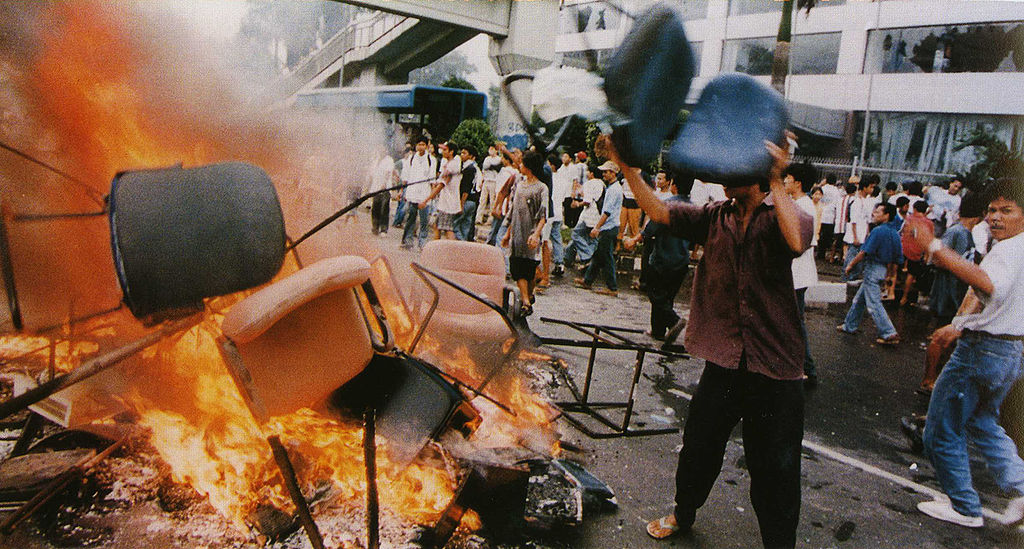 After 32 years of military violence, the New Order could no longer be tolerated by the masses / Image: Office of the Vice President
After 32 years of military violence, the New Order could no longer be tolerated by the masses / Image: Office of the Vice President
That is why, in general, the ruling class prefers to use the illusion of democracy to rule over the people. With a democratic parliament, people are given some sort of medium to express their discontent every few years through elections. This is a ‘safe channel’ that in reality doesn’t result in any fundamental change. Of course there is always a whole apparatus of violence standing behind the parliament, with their batons and pistols ready to strike the head of the masses who are considered “too eager” or “too bold” in demanding their freedom. In the end, after 32 years of military violence, the New Order could no longer be tolerated by the masses.
The second factor was the rapid growth of the proletarian battalion, starting in the late 1980s. From 1986 to 1993, manufacturing jobs grew quickly, at around nine percent per year, especially in garment, textile and shoes factories. With the growth of the proletariat, we saw also the sharpening of class struggle. This was reflected in the increasing number of recorded strikes, from 61 in 1990 to 300 by 1994. Under a climate of brutal repression, as exemplified by the brutal murder of Marsinah in 1993 [a trade union activist who was killed after leading a strike movement in the factory where she worked], the strikes reflected the spirit of rebellion, showing the workers no longer feared the army boots that had for so long pressed them into the dirt.
The third factor, which is no less important, was the practice of corruption, collusion, and nepotism of the Cendana family [Cendana is the name of the street where Suharto and his family lived] and the people around them, who had become deeply vulgar. Suharto and his good friend, Liem Sioe Liong, the richest man in Indonesia, practically divided Indonesia as loot amongst their family members and closest associates. The widening gap between the rich and the poor became intolerable.
All these factors combined into a perfect storm. A revolution exploded in a country with the fourth largest population in the world. From the point of view of the ruling class, Reformasi 1998 was a chaotic disaster. But from the point of view of the oppressed people, it freed them from the shackles that had long bound them.
Today we are entering a similar period of turbulence, of far greater depth and extent. After the 1998 crisis, all capitalists swore that they had learned their lesson and would no longer repeat their mistake. They admitted that they momentarily lost their composure in their profit-seeking measures, and now they will act with more calm, patience, responsibility and wisdom in running their businesses. But in a very short time, they repeated their mistakes, this time on a global scale. In 2008 the world was struck with the global financial crisis, precipitated by the bursting housing bubble in the US. The capitalists never learned anything. The inherent contradictions of capitalism will always bring about the same economic crises. The boom-and-bust cycle can never be separated from the capitalist economic system, as Karl Marx explained more than 150 years ago:
“It is enough to mention the commercial crises that by their periodical return put the existence of the entire bourgeois society on trial, each time more threateningly… In these crises, there breaks out an epidemic that, in all earlier epochs, would have seemed an absurdity — the epidemic of overproduction. Society suddenly finds itself put back into a state of momentary barbarism; it appears as if a famine, a universal war of devastation, had cut off the supply of every means of subsistence; industry and commerce seem to be destroyed; and why? Because there is too much civilisation, too much means of subsistence, too much industry, too much commerce.”
But there is something qualitatively different in the 2008 crisis. The 1998 crisis was limited to Asia and the economy quickly recovered in one or two years, this time we have yet to witness any meaningful recovery, 10 years after the fact. The 2008 financial crisis spread to the whole world, hitting one country after another. Every attempt by governments to restore the economic equilibrium only results in the disturbance of the political equilibrium. We are truly entering a new period in the history of capitalism, a period of revolution and counter-revolution, a period where the whole validity of the system is being questioned, a period of sharp polarization to the left and also to the right, with violent, sudden and sharp swings of public opinion.
All earth-shattering political events since 2008 – to name a few of them: the Arab Revolution; the Occupy movement; Brexit referendum; Corbyn in the UK, Melenchon in France, and Sanders in the US; to certain extent the election of Donald Trump; Black Lives Matter; the rise, and fall, of Syriza in Greece and Podemos in Spain; the national movement of Catalonia; the national referendum in Scotland; and many more – are clear indications that we are entering into a stormy period. And this is just the beginning. Bigger political events are being prepared. There is not one stable regime to be found.
Capitalism in crisis
In short, capitalism is entering its deepest crisis, economically, socially and politically. Workers, peasants, urban poor, and the youth are launching an ever-intensifying struggle against this crumbling system. To be sure, the movement does not proceed in a straight line, always in ascendancy until we reach a revolution. The road that has to be trod by the toiling masses to reach the final conclusion of revolution is winding, surrounded with swamps, steep ridges and deep abysses. In the absence of a revolutionary leadership, this journey will even be longer. The task of a revolutionary leadership is to guide the masses through this obstacle-ridden journey. But what is clear today is that capitalism in its crisis are pushing the masses to the road of struggle.
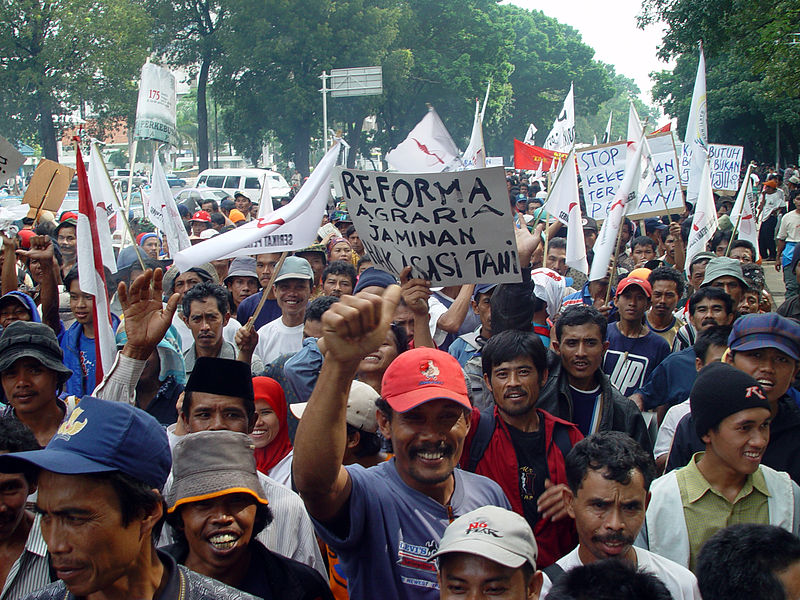 Today the Indonesian working class is in a much better position than they were back in 1998 / Image: Jonathan McIntosh
Today the Indonesian working class is in a much better position than they were back in 1998 / Image: Jonathan McIntosh
That is why all talk about the so-called strengthening of the right, of fundamentalism, of militarism, of ‘neoliberalism’, is truly misplaced and wrong. It reflects the pessimism of the left, especially amongst the liberals and the reformists – and some of those who claim to be socialists or Marxists – who have given up. They only see what they want to see, to validate their old prejudices that revolution is utopian and impossible, that we have to be realistic and pragmatic, and therefore limit ourselves to the kind of struggle that can provide immediate results.
If the movement is to escape from this abyss, it must first have a correct perspective on the period we are entering. Today we see symptoms similar to those that unfolded before the 1998 revolution: a chronic economic impasse, a crisis of legitimacy for political and economic elites and a widening chasm between the rich and the poor that is making the latter more and more disgusted. Today these symptoms are deeper and farther reaching, and thus a bigger explosion is being prepared.
There might be a smart Alec who feels like he has the right to interject: “That was before. Today is completely different.” Yes, that is entirely correct. What is this difference? Today the Indonesian working class is in a much better position than they were back in 1998. More workers are organized in trade unions, and they have accumulated many experiences in organizing mass actions and strikes – even a national general strike of millions of workers. The composition of the working class has also improved quantitatively and qualitatively, with more workers employed in giant and capital-intensive factories. The peasants are also organized in various organizations, and so are the urban poor. In other words, today the objective conditions present no obstacle. The only obstacle is that of subjective factor, of revolutionary leadership.
Building a revolutionary leadership
Leadership is key in a movement, and 1000 times more in a moment of revolution. In a decisive moment, the victory or the defeat of a revolution can be decided by a small group of people – small relative to the size of the masses – who are standing at the front of the movement.
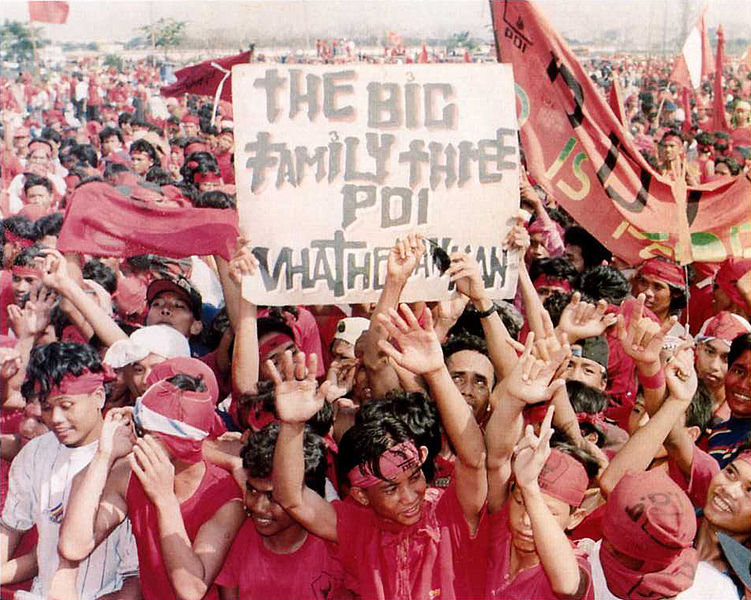 PRD was too small to be a decisive force during the moment of revolution / Image: Office of the Vice President
PRD was too small to be a decisive force during the moment of revolution / Image: Office of the Vice President
PRD (People’s Democratic Party) in the 1990s was not a mass party. It was a small party, but its small size was compensated for by the fact that in its ranks were gathered the best youth and workers: the most courageous and class conscious. PRD played a role much bigger than its size, and this was made possible because it put forward the most advanced idea at that time, which was socialism. Even though what these PRD members understood about socialism was incomplete (here is not the place to analyze their theoretical shortcomings) their politics clearly gave them an advantage over other groups in the struggle against the New Order regime.
However PRD was too small to be a decisive force during the moment of revolution in 1998. When the wider masses started to move, PRD was swept to the side, thrown hither-and-thither, and finally smashed to pieces in one protracted process of death agony. What is the lesson that we need to draw from this? We have to prepare a revolutionary party long before a revolution breaks out. It also has to be built on the correct ideas, programme, methods and tradition, which is scientific socialism, enriched with the 150 years experience of proletariat struggle. There is no shortcut to building this revolutionary leadership, but its construction has to start now.
Struggle for socialism
The end result of Reformasi 1998 showed that it was not enough to overthrow Suharto and the New Order regime. This largely cosmetic change did not touch any fundamental problems, and the experience of the past 20 years has been a living witness to this fact. The same group of people are still ruling, albeit in a different manner and with a different colouring; and the same people as well, the workers, peasants and urban poor, are still oppressed. Reformasi has failed, and what’s needed is revolution.
Capitalism can no longer advance humanity, and has in fact become an obstacle that threatens to drag the toiling masses back to barbarism. It is not enough to resist capitalism. It needs to be overthrown in a revolutionary manner. An economic system based on the private ownership of means of production by a handful of people and the so-called free market must be replaced by collective ownership of the means of production, and democratic economic planning by the working class. This is our historical task.
The only class that can lead the toiling masses in fulfilling this historical task is the working class, because it holds the main economic levers in its hands. The working class, in alliance with other layers of the working people: peasants, fishermen, and urban poor, will provide the necessary leadership to upturn capitalism and establish socialism. The working-class struggle therefore cannot be limited to that of trade union struggle and economic gains alone. It has to encompass political struggle. However, this political struggle cannot be done through joining a party of capital. This was done numerous times by many trade union leaders, and most recently by Said Iqbal – leader of the metal workers union federation (FSPMI) – who is ready to support a bourgeois party in the upcoming 2019 election if he can secure the position of Minister of Labour.
The importance of class independence is one of the main lessons of Reformasi 1998. The majority of the left at that time supported collaboration with the bourgeois opposition camp (Amien Rais, Megawati and Gus Dur) with an excuse that – at the moment – the priority was to overthrow Suharto. The Reformasi 1998 was eventually betrayed by these reformist leaders, who negotiated a peaceful transition of power that left the whole oppressive system intact.
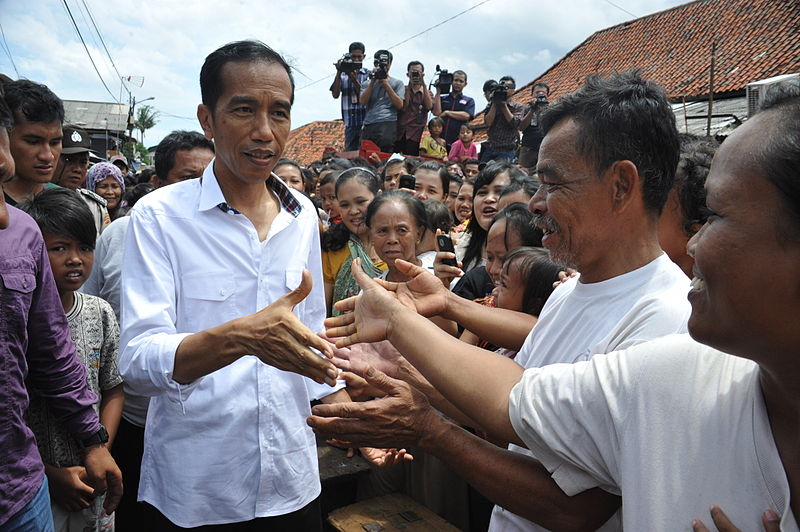 The lefts who threw their weight behind supporting Jokowi in the 2014 presidential election have learned nothing / Image: Pemerintah Provinsi DKI Jakarta
The lefts who threw their weight behind supporting Jokowi in the 2014 presidential election have learned nothing / Image: Pemerintah Provinsi DKI Jakarta
Woe to those lefts who never learn anything, for once again in 2014 they threw their weight behind supporting Jokowi in the presidential election with the same excuse: the priority was to defeat the New Order candidate, Prabowo. Class independence was auctioned off for a song, and what is peddled cheaply can never bring the desired result. The Jokowi regime was a disappointment and did not bring any fundamental change to people’s daily lives. Low wages (through Law No. 78), land grab against the peasants, forced evictions, oppression against the Papuans – all these are active policies of Jokowi’s government.
The 20 years experience after Reformasi 1998 should strengthen our conviction that the only banner that must be adopted by the movement today is that of socialism. This banner must be help up high proudly, clean and clear, so that it can be seen by the working masses who are looking for a way out of this madness we call capitalism. Without this banner, there is no future for the movement or the working class.

